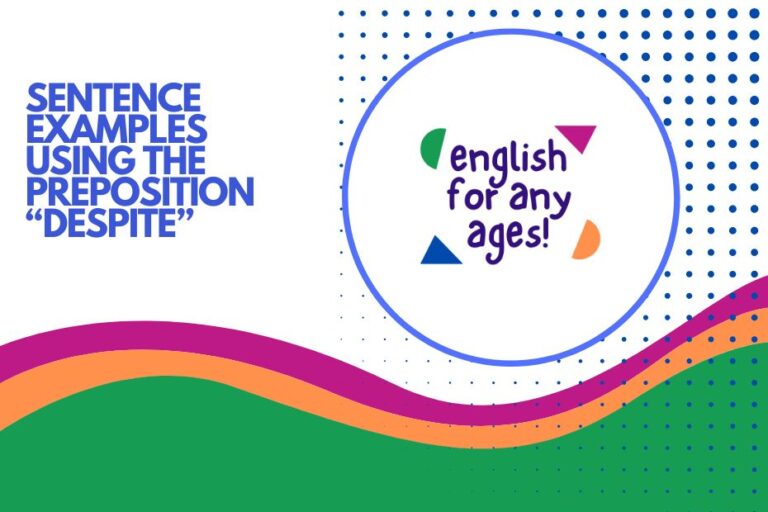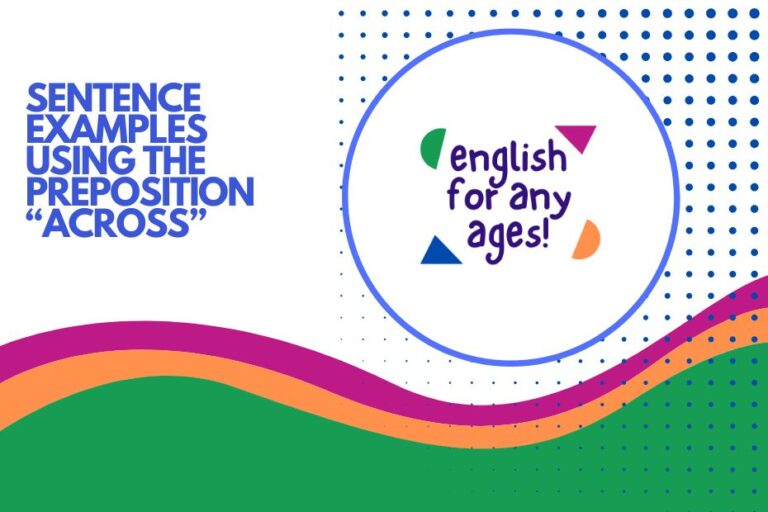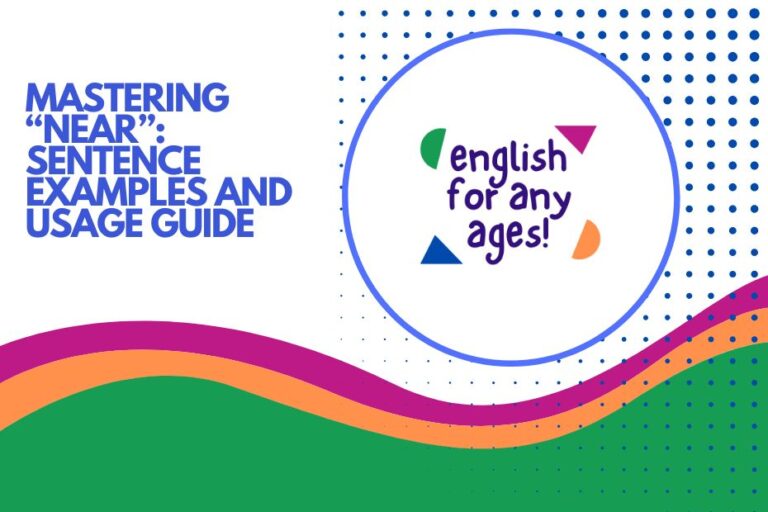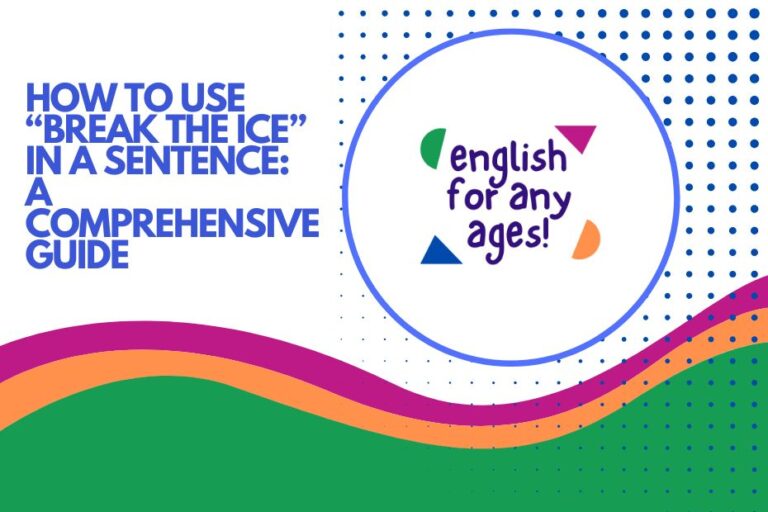Mastering “Behind”: Sentence Examples and Usage Guide
The preposition “behind” is a versatile word in the English language, playing a crucial role in indicating location, position, cause, and more. Understanding its various uses is essential for constructing clear and accurate sentences.
This article provides a comprehensive guide to using “behind,” complete with numerous examples, usage rules, and practice exercises. Whether you’re an English language learner or simply looking to refine your grammar skills, this guide will help you master the nuances of “behind.” This guide is designed to help you understand the various ways the preposition “behind” can be used in sentences, improving both your writing and speaking skills.
This comprehensive guide is for students learning English, non-native speakers looking to improve their fluency, and anyone interested in deepening their understanding of English grammar. By exploring the different uses of “behind,” you’ll gain the confidence to use it correctly and effectively in various contexts.
Table of Contents
- Definition of “Behind”
- Structural Breakdown
- Types and Categories of “Behind” Usage
- Examples of “Behind” in Sentences
- Usage Rules for “Behind”
- Common Mistakes with “Behind”
- Practice Exercises
- Advanced Topics
- Frequently Asked Questions (FAQ)
- Conclusion
Definition of “Behind”
“Behind” is a preposition that primarily indicates a position at the back of something or someone. It can also denote being late, lagging in progress, or being the cause or origin of something.
In essence, “behind” signifies a relationship of location, time, or causation where one entity trails or is obscured by another. Understanding these various functions is key to using “behind” correctly.
As a preposition, “behind” always requires an object, which can be a noun, pronoun, or noun phrase. The object of the preposition specifies what is being trailed or obscured.
For instance, in the sentence “The cat is behind the sofa,” “the sofa” is the object of the preposition “behind.”
Structural Breakdown
The basic structure of a sentence using “behind” as a preposition is: Subject + Verb + Behind + Object. The object of the preposition can be a simple noun (e.g., “the door”), a pronoun (e.g., “him”), or a more complex noun phrase (e.g., “the large oak tree”).
Here’s a breakdown of how “behind” functions within a sentence:
- Subject: The person or thing performing the action or being described.
- Verb: The action or state of being.
- Behind: The preposition indicating the relationship.
- Object: The noun, pronoun, or noun phrase that “behind” relates to.
For example, in the sentence “The ball rolled behind the car,” “The ball” is the subject, “rolled” is the verb, “behind” is the preposition, and “the car” is the object of the preposition.
Types and Categories of “Behind” Usage
“Behind” can be used in several distinct ways, each conveying a slightly different meaning. Here’s a breakdown of the main categories:
Behind Indicating Location
This is the most common usage of “behind.” It indicates that something is located at the back of something else. The object of the preposition specifies the thing that is being obscured or trailed.
Examples include: “The house is behind the trees,” “The sun disappeared behind a cloud,” and “He hid behind the curtain.” In each case, “behind” indicates a spatial relationship.
Behind Indicating Time
“Behind” can also indicate that something is late or lagging in time. This usage often implies a schedule or expectation that has not been met.
Examples include: “We are running behind schedule,” “The project is behind deadline,” and “She is behind on her payments.” Here, “behind” signifies a temporal discrepancy.
Behind Indicating Cause or Responsibility
In some cases, “behind” can suggest the cause or origin of something, often implying a hidden or less obvious influence.
Examples include: “Who is behind this decision?”, “There must be someone behind this conspiracy,” and “He is the mastermind behind the operation.” In these instances, “behind” indicates a source of influence or control.
Behind Indicating Support or Encouragement
“Behind” can convey support or encouragement. This usage suggests that someone is backing or endorsing something or someone.
Examples include: “The whole team is behind you,” “The company is behind the new initiative,” and “I am behind your decision.” Here, “behind” signifies endorsement and backing.
Behind Indicating Development or Progress
“Behind” can be used to describe someone or something that is less advanced or developed compared to others.
Examples include: “The child is behind in reading skills,” “The country is behind in technological development,” and “Their product is behind the competition.” In this context, “behind” indicates a lack of progress or advancement.
Examples of “Behind” in Sentences
To further illustrate the various uses of “behind,” here are several examples categorized by type, presented in tables for clarity.
Location Examples
The following table provides examples of “behind” used to indicate location. These examples demonstrate how “behind” specifies the position of one object relative to another.
| Sentence | Explanation |
|---|---|
| The cat is sleeping behind the couch. | The cat’s location is at the back of the couch. |
| The car is parked behind the building. | The car’s location is at the back of the building. |
| He hid behind the tree. | His location is at the back of the tree, concealing him. |
| The sun disappeared behind the clouds. | The sun’s visibility was obscured by the clouds. |
| The children were playing behind the shed. | The children’s location was at the back of the shed. |
| There’s a small garden behind the house. | The garden is located at the back of the house. |
| She left her umbrella behind the door. | The umbrella was placed at the back of the door. |
| The secret message was hidden behind the painting. | The message was concealed at the back of the painting. |
| The restaurant is located just behind the library. | The restaurant’s location is at the back of the library. |
| The dog buried its bone behind the rose bushes. | The bone was buried at the back of the rose bushes. |
| A mysterious figure lurked behind the shadows. | The figure’s location was obscured by the shadows. |
| The old well is situated behind the farmhouse. | The well’s location is at the back of the farmhouse. |
| The thief crept silently behind the sleeping guard. | The thief moved to a position at the back of the guard. |
| The waterfall is hidden behind a dense forest. | The waterfall is located at the back of the forest. |
| The lost city is said to be buried behind the mountains. | The city’s supposed location is at the back of the mountains. |
| The artist painted a landscape with a village behind the hill. | The village’s position in the painting is at the back of the hill. |
| The treasure was buried behind the ancient ruins. | The treasure’s location was at the back of the ruins. |
| The hiker found a cave behind the waterfall. | The cave’s location was at the back of the waterfall. |
| The moon peeked out from behind the clouds. | The moon’s appearance was initially obscured by the clouds. |
| The children built a fort behind the garage. | The fort’s location was at the back of the garage. |
| The cyclist rode behind the lead car for protection from the wind. | The cyclist positioned themselves at the back of the car to reduce wind resistance. |
| The statue was placed behind the podium during the ceremony. | The statue was located at the back of the podium. |
| The detective found the missing evidence behind the bookshelf. | The evidence’s location was concealed at the back of the bookshelf. |
Time Examples
This table illustrates the use of “behind” to indicate delays or being late in terms of time.
| Sentence | Explanation |
|---|---|
| We are behind schedule on this project. | The project is not progressing as quickly as planned. |
| She is behind on her rent payments. | She has not paid her rent on time. |
| The train was running behind due to the weather. | The train was delayed because of the weather conditions. |
| He’s a little behind in his studies this semester. | He is not keeping up with his coursework. |
| The company is behind its competitors in innovation. | The company is lagging in developing new products or ideas. |
| The car is behind on its maintenance schedule. | The car has not received the necessary maintenance at the appropriate times. |
| I’m behind on my emails and need to catch up. | I have not read and responded to my emails in a timely manner. |
| The construction project is behind by several weeks. | The construction is delayed by a significant amount of time. |
| The team is behind in points in the championship. | The team has fewer points than their competitors. |
| The country is behind in achieving its environmental goals. | The country is not making sufficient progress towards its environmental targets. |
| The technology is behind current standards. | The technology isn’t up to date with modern standards. |
| The student is behind in their homework. | The student hasn’t completed their homework on time. |
| The delivery is behind schedule due to traffic. | The delivery is late because of traffic delays. |
| The old computer system is behind the times. | The computer system is outdated. |
| The athlete is behind in training due to injury. | The athlete is lacking training because of an injury. |
| The economy is behind in its recovery. | The economy is recovering slower than expected. |
| The software update is behind its release date. | The software update is delayed. |
| The research is behind schedule due to funding issues. | The research is delayed because of funding problems. |
| The government is behind in implementing new policies. | The government is slow to introduce new policies. |
| The organization is behind in its fundraising efforts. | The organization is not raising enough money. |
| The farmer is behind with the harvest due to bad weather. | The farmer is delayed in harvesting crops because of unfavorable weather. |
| The new regulations are behind schedule for implementation. | The implementation of the new regulations is delayed. |
| The scientist is behind in publishing their research findings. | The scientist is late in releasing their research. |
Cause Examples
The following table provides examples of “behind” used to indicate the cause or origin of something.
| Sentence | Explanation |
|---|---|
| Who is behind this decision? | Who is responsible for making this decision? |
| There must be someone behind this conspiracy. | Someone is secretly orchestrating this conspiracy. |
| He is the mastermind behind the operation. | He is the person who planned and controls the operation. |
| What’s behind your sudden change of heart? | What is the reason for your sudden change of heart? |
| The company suspects sabotage is behind the system failure. | The company believes sabotage caused the system failure. |
| Jealousy was behind his actions. | His actions were motivated by jealousy. |
| A lack of funding is behind the project’s delay. | The project is delayed because of insufficient funding. |
| The council believes that external forces are behind the unrest. | The council thinks external forces are causing the unrest. |
| The scientist is trying to find the cause behind the mysterious illness. | The scientist is seeking the reason for the illness. |
| She believes that fate is behind everything that happens. | She thinks that fate controls all events. |
| Greed was behind their ruthless business practices. | Greed motivated their unethical business tactics. |
| Curiosity was behind the child’s constant questioning. | The child’s questions were motivated by curiosity. |
| The government suspects foreign powers are behind the cyber attack. | The government thinks foreign powers caused the cyber attack. |
| A misunderstanding was behind the argument between friends. | The argument was caused by a misunderstanding. |
| The detective is trying to uncover the truth behind the crime. | The detective wants to find the real cause of the crime. |
| The author explored the psychological factors behind the character’s actions. | The author examined the psychological reasons for the character’s behavior. |
| Public outrage was behind the government’s decision to reverse the policy. | Public anger caused the government to change its policy. |
| The journalist is investigating the corruption behind the scandal. | The journalist is looking into the reasons for the scandal. |
| The psychologist is studying the motivations behind criminal behavior. | The psychologist is examining what motivates criminals. |
| The historian explored the economic forces behind the revolution. | The historian examined the economic reasons for the revolution. |
| The environmentalist believes human activity is behind climate change. | The environmentalist thinks human actions are causing climate change. |
| The teacher is trying to understand the reasons behind the student’s poor performance. | The teacher wants to know why the student is not doing well. |
| The doctor is searching for the genetic factors behind the disease. | The doctor is looking for the genetic causes of the disease. |
Support Examples
This table illustrates the usage of “behind” to convey support or endorsement.
| Sentence | Explanation |
|---|---|
| The whole team is behind you. | The entire team supports you. |
| The company is behind the new initiative. | The company supports the new initiative. |
| I am behind your decision. | I support your decision. |
| The community is behind the effort to clean up the park. | The community supports the effort to clean the park. |
| The university is behind the research project. | The university supports the research project. |
| The family is behind her career choice. | The family supports her career choice. |
| The organization is behind the campaign for social justice. | The organization supports the campaign for social justice. |
| The investors are behind the startup company. | The investors support the startup company financially. |
| The president is behind the new legislation. | The president supports the new laws. |
| The mentor is behind the student’s aspirations. | The mentor supports the student’s goals. |
| The fans are behind their favorite athlete. | The fans support the athlete. |
| The government is behind the development project. | The government supports the development project. |
| The scientists are behind the environmental protection plan. | The scientists support the environmental protection plan. |
| The union is behind the workers’ demands. | The union supports the workers’ requests. |
| The artist’s peers are behind their innovative work. | The artist’s colleagues support their creative work. |
| The community is behind the local school’s fundraising efforts. | The community supports the school’s attempts to raise money. |
| The non-profit organization is behind the initiative to help the homeless. | The organization supports the effort to help the homeless. |
| The board of directors is fully behind the CEO’s leadership. | The board supports the CEO’s management. |
| The medical staff is behind the patient’s recovery. | The medical staff support the patient’s healing. |
| The volunteers are behind the relief efforts for the disaster victims. | The volunteers support the efforts to help those affected by the disaster. |
Development Examples
This table illustrates the usage of “behind” to indicate a lack of progress or advancement.
| Sentence | Explanation |
|---|---|
| The child is behind in reading skills. | The child’s reading skills are less developed than expected for their age. |
| The country is behind in technological development. | The country’s technology is less advanced than other countries. |
| Their product is behind the competition. | Their product is not as advanced as competing products. |
| The student is behind in math compared to their classmates. | The student’s math skills are less developed than their classmates’. |
| The region is behind in economic growth. | The region’s economy is growing slower than other regions. |
| The company is behind in adopting new technologies. | The company is not implementing new technologies as quickly as it should. |
| The community is behind in addressing environmental issues. | The community is not taking sufficient action on environmental problems. |
| The software is behind in terms of features and functionality. | The software has fewer features and less functionality than its competitors. |
| The project is behind in its implementation phase. | The project’s implementation is not progressing as planned. |
| The school is behind in providing adequate resources for students. | The school is not providing enough resources for its students. |
| The team is behind in developing new strategies. | The team is slow to develop new strategies. |
| The city is behind in infrastructure development. | The city’s infrastructure is not developing quickly enough. |
| The research is behind in uncovering new findings. | The research is slow to produce new discoveries. |
| The government is behind in implementing social reforms. | The government is not introducing social reforms quickly enough. |
| The industry is behind in adopting sustainable practices. | The industry is slow to adopt environmentally friendly practices. |
| The organization is behind in meeting its goals for the year. | The organization is not achieving its annual goals fast enough. |
| The athlete is behind in training due to a recent injury. | The athlete is not training as much as needed because of an injury. |
| The country is behind in achieving gender equality. | The country has not made enough progress toward gender equality. |
| The community is behind in addressing the needs of senior citizens. | The community is not doing enough to help senior citizens. |
| The company is behind in its efforts to promote diversity and inclusion. | The company is not doing enough to create a diverse and inclusive workplace. |
Usage Rules for “Behind”
Here are some key rules to keep in mind when using “behind”:
- Placement: “Behind” is typically placed before the noun or pronoun it governs. For example: “The book is behind the desk.”
- Object Required: “Behind” is a preposition, so it always needs an object. You can’t say “The cat is behind” without specifying what the cat is behind.
- Context Matters: The meaning of “behind” can change depending on the context. Pay attention to the surrounding words and the overall meaning of the sentence to ensure you’re using it correctly.
- Figurative Language: “Behind” can be used figuratively to express abstract concepts like being late or being the cause of something.
Common Mistakes with “Behind”
Here are some common mistakes people make when using “behind,” along with corrections:
| Incorrect | Correct | Explanation |
|---|---|---|
| The house is behind. | The house is behind the barn. | “Behind” requires an object. |
| She is behinding the others. | She is behind the others. | “Behind” is not a verb and doesn’t take the -ing form in this context. |
| I left my keys behind. | I left my keys behind the counter. | While “behind” can be used as an adverb in some contexts (like “I left my keys behind”), it requires an object when used as a preposition. |
| They are the reason behind. | They are the reason behind the success. | “Behind” needs an object to clarify what it refers to. |
Practice Exercises
Test your understanding with these practice exercises. Fill in the blanks with “behind” in the following sentences.
| Question | Answer |
|---|---|
| 1. The bicycle is parked ______ the garage. | 1. behind |
| 2. We are running ______ schedule. | 2. behind |
| 3. Who is ______ this decision? | 3. behind |
| 4. The team is ______ you all the way. | 4. behind |
| 5. The student is ______ in their studies. | 5. behind |
| 6. The cat jumped ______ the sofa. | 6. behind |
| 7. The truth is ______ the lies. | 7. behind |
| 8. The soldiers marched ______ the general. | 8. behind |
| 9. The curtain fell ______ the actors. | 9. behind |
| 10. The dog wagged his tail ______ the little girl. | 10. behind |
| 11. The artist painted a landscape with mountains ______ the valley. | 11. behind |
| 12. The detective searched for clues ______ the locked door. | 12. behind |
| 13. The secret garden was hidden ______ the high walls. | 13. behind |
| 14. The protesters marched ______ the banner. | 14. behind |
| 15. The sculptor worked tirelessly ______ the scenes. | 15. behind |
Advanced Topics
For advanced learners, “behind” can also be part of phrasal verbs, such as “fall behind” (to lag), “leave behind” (to abandon), and “get behind” (to support). Understanding these phrasal verbs requires recognizing their idiomatic meanings, which may not be immediately obvious from the individual words.
Additionally, “behind” can be used in more complex sentence structures, such as those involving clauses or participial phrases. For example: “Knowing that she was behind schedule, she worked late into the night.” Here, “behind schedule” modifies “she” and adds context to the action.
Frequently Asked Questions (FAQ)
- What is the difference between “behind” and “in back of”?
“Behind” and “in back of” are often used interchangeably to indicate location, but “behind” is generally considered more formal and widely accepted. “In back of” can sometimes sound less precise.
- Can “behind” be used as an adverb?
Yes, “behind” can be used as an adverb, often to mean “remaining” or “not discovered.” For example, “He left his worries behind.” However, when indicating location, it typically functions as a preposition requiring an object.
- How do I know when “behind” indicates cause and not location?
Context is key. If the sentence implies that something is responsible for or the reason for something else, “behind” likely indicates cause. If the sentence simply describes a spatial relationship, it indicates location.
- Is it correct to say “behind of”?
No, “behind of” is generally considered incorrect. The correct preposition is simply “behind.”
- What are some synonyms for “behind” when indicating location?
Synonyms include “at the back of,” “in back of,” “after,” and “beyond,” although the precise meaning may vary slightly.
- What is the difference between ‘behind’ and ‘after’ when referring to time?
While both prepositions can denote a temporal sequence, ‘behind’ often implies a delay or being late, whereas ‘after’ simply indicates a subsequent point in time. For example, “He is behind schedule” suggests he is not on time, while “He arrived after the meeting” simply means he came later.
- Can ‘behind’ ever be used as part of a phrasal verb? If so, can you give an example?
Yes, ‘behind’ frequently appears in phrasal verbs. A common example is “fall behind,” which means to fail to keep up with a required pace or standard. For instance, “If you miss too many classes, you might fall behind in your studies.”
- In what contexts is ‘behind’ most appropriate versus other similar prepositions?
‘Behind’ is most appropriate when you want to emphasize that something is located at the back of something else, or when indicating a delay, cause, or support. Other prepositions like ‘after’ or ‘beyond’ may be more suitable in different contexts where the emphasis is on sequence or surpassing a limit, respectively.
Conclusion
Mastering the use of “behind” involves understanding its various roles as a preposition indicating location, time, cause, support, and development. By studying the examples, usage rules, and common mistakes outlined in this guide, you can improve your accuracy and fluency in English.
Remember to pay attention to context and practice using “behind” in different sentence structures.
Continue practicing with different exercises and real-world examples to solidify your understanding. With consistent effort, you’ll confidently use “behind” in your writing and speech, enhancing your overall communication skills.
Understanding prepositions is crucial for expressing relationships between different elements in a sentence, and “behind” is a key player in this area.






